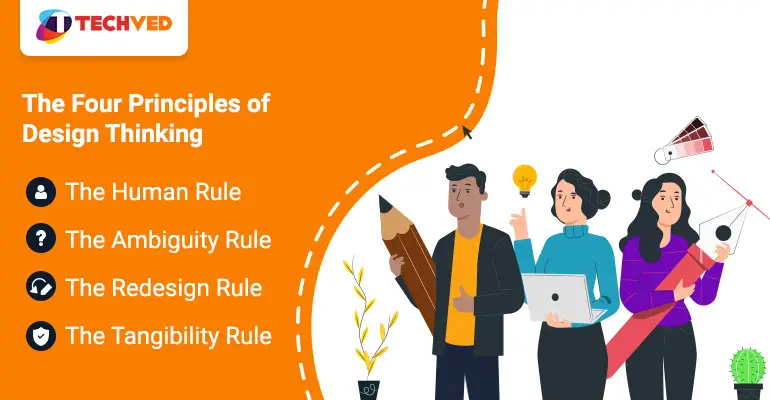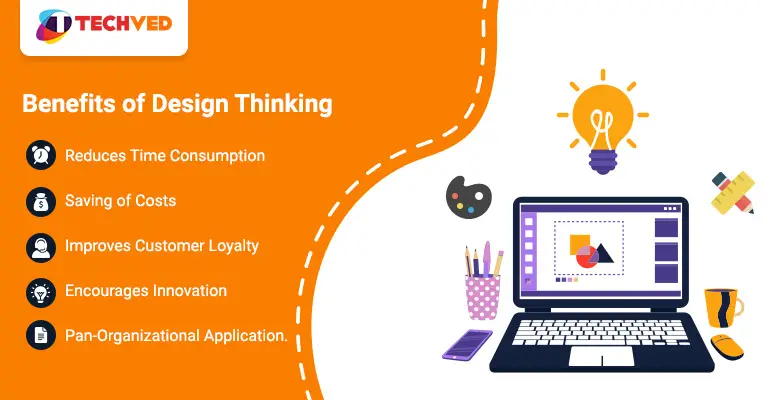You are no stranger to the relentless pressure to innovate when you are a designer, entrepreneur or some kind of employee. This is the hidden element of success. In competitive markets, we have the potential for creativity.
Innovation is the foundation of all the largest businesses in the world. The challenge now facing all these firms is to sustain or further advance this creativity in their respective fields. Innovation is not a one-time industry and needs to be part of the DNA of the organization.
It’s not always easy to invent, this is where Design Thinking comes in.
Design thinking has always been considered the holy grail of innovation and the remedy to stagnation. It has been credited with transforming start-ups into billion-dollar evaluated companies. It’s a concept that’s becoming increasingly hard to ignore, but it still continues to be a mystery.
In this article, we’ll learn some more about design thinking and why is it getting more and more popular with each passing day.
What is Design Thinking?
Design Thinking is both an ideology and a process, braced with solving complex problems in a highly human-centric way. It is an approach used for practical and creative problem-solving. It is based heavily on the methods and processes that designers use (hence the name), but it has actually evolved from a range of different fields including architecture, engineering, and business. Design Thinking can be applied to any field, not necessarily design-specific.
Design Thinking is extremely user-centric. It focuses on humans, first and foremost, seeking to understand people’s needs and come up with effective solutions to meet those needs. It is what can be called a solution-based approach to problem-solving. It can also be called an iterative procedure that encourages continuous experimentation until the right solution is discovered.
Design Thinking is not a designers exclusive property. It has been practiced by all great innovators in literature, art, music, technology, engineering and industry. The most particular thing about Design Thinking is that the work processes of a designer will allow one to systematically extract, instruct, learn and use these strategies to solve the problems creatively and innovatively.
Some of the world’s leading brands such as Apple, Google, Samsung, and GE have seamlessly adopted the Design Thinking approach and it is being taught at leading universities around the world, including Stanford, Harvard, and MIT.
The Four Pillars Of Design Thinking
 The Human Rule
The Human Rule
No matter what the context, all design activity is social in nature, and any social innovation will bring us back to the ‘human-centric point of view’.
The Ambiguity Rule
Ambiguity is inevitable and it cannot be removed or oversimplified. Experimenting right until the limits of your knowledge and ability is crucial in being able to see things differently.
The Redesign Rule
All design is redesign. While technology and social circumstances may change and evolve, basic human needs remain unchanged. We essentially only redesign in order to fulfil these needs or reach certain desired outcomes.
The Tangibility Rule
Making ideas tangible in the form of prototypes enables designers to communicate them more effectively.
Design Thinking thrives on creativity and innovation. As human beings, we rely on the knowledge and experiences we have accumulated over the years, which later shapes our actions. We form patterns and habits that can limit our view of things when it comes to problem-solving. Rather than repeating the same tried-and-tested methods, Design Thinking encourages us to remove our blinkers and consider other alternatives. The entire process is meant to be all about challenging assumptions and exploring new pathways.
Design Thinking is often cited as the healthy middle ground of problem-solving and analytics.
Another great benefit of Design Thinking is that it puts humans first. By focusing so heavily on empathy, encourages businesses and organizations to consider the real people who actually use their products and services which helps in creating meaningful user experiences. For the user, this means better, more useful products. For businesses, this means happy customers and better profit margins.
Solving ‘Wicked Problems’ in Design Thinking
Design Thinking can be especially useful when it comes to solving ‘Wicked Problems’. The term ‘Wicked Problems’ was coined by design theorist Horst Rittel in the 1970s to describe particularly tricky problems that are highly ambiguous in nature. With these problems, there are many unknown factors and no definitive solutions. In fact, solving one aspect of a wicked problem is likely to give rise to further challenges. Another key characteristic of wicked problems is that they have no stopping point. As the nature of the problem changes over time, so must the solution. Hence, solving wicked problems is an ongoing process that requires design thinking. Some examples of wicked problems in our society today include things like poverty, hunger, and climate change.
Design Thinking is often referred to as ‘outside the box’ thinking, as designers are attempting to develop new ways of thinking that do not abide by the dominant or more common problem-solving methods.
Benefits of Design Thinking
 Integrating Design Thinking into your process can add huge business value, ultimately ensuring that the products you design are not only desirable for customers but also viable in terms of company budget and resources.
Integrating Design Thinking into your process can add huge business value, ultimately ensuring that the products you design are not only desirable for customers but also viable in terms of company budget and resources.
Let’s have a look at some of the main benefits of using Design Thinking:
Reduces Time Consumption
With its emphasis on problem-solving and finding viable solutions, Design Thinking can significantly reduce the amount of time spent on design and development.
Saving of Costs
Getting successful products to market faster ultimately saves businesses a lot of money. Design Thinking has been proven to have reaped a significant return on investment as well.
Improves Customer Loyalty
Design Thinking ensures a user-centric approach, which ultimately boosts user engagement and customer retention in the long term.
Encourages Innovation
Design Thinking is all about challenging assumptions and established beliefs, encouraging all stakeholders to think outside the box. This fosters a culture of innovation that extends well beyond the design team.
Pan-Organizational Application
The great thing about Design Thinking is that it’s not just for designers. It encourages team-work and cross-team collaboration. It can also be applied to virtually any team across any given industry.
Whether you’re establishing a Design Thinking culture on a company-wide scale or simply trying to improve your approach towards user-centric design, Design Thinking will help you innovate, focus, and ultimately design products that solve real user problems.
Final Thoughts
Design Thinking is basically concerned with the interest and willingness to pose difficult questions and problems. One aspect of outside the box thought is necessary to show whether or not previous assumptions are correct.
Design Thinking offers an opportunity to explore and perform the right research, prototyping and evaluating services and goods to uncover innovative and liberating ways to improve the overall user experience. That's, right at your service, design thinking!